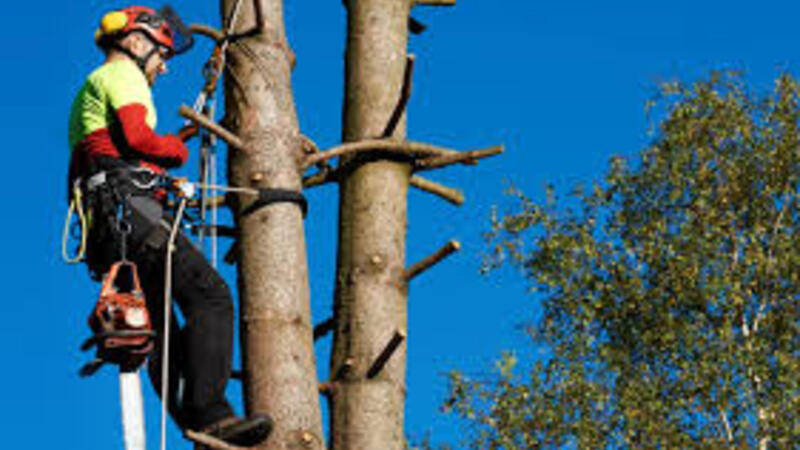Natural calamities can damage neighbourhoods, creating a wake of devastation. Among the numerous issues that emerge in the aftereffects, managing collapsed trees and destroyed vegetation is critical. Arborists perform an important part in disaster assistance, using their knowledge to securely and rapidly remove trees and restore normality. Let’s look at how arborists in Portland can help during these trying circumstances.
Evaluating the Damage
When a natural catastrophe occurs, one of the first tasks in relief efforts is determining the scale of the harm caused. Arborists have been instructed to assess tree health rapidly and correctly. They can tell whether trees offer an urgent threat to persons and assets, including those bending excessively or having broken limbs dangling precipitously. This initial evaluation is crucial for organizing tasks and maintaining security.
Keeping Security First
Security is crucial in disaster-stricken domains, and arborists are professionals who enforce preventative measures throughout tree removal. They are proficient at dealing with hazardous circumstances using particular supplies and tactics. For example, they may use scaffolding, rigging systems, and chainsaws to disassemble and eliminate massive, fragile trees properly. This experience helps avoid future incidents and harm, benefiting employees and the general public.
Collaborating with Emergency Services
Portland arborists frequently collaborate with emergency agencies and municipal authorities during disaster relief initiatives. Their understanding of tree form and actions under pressure is essential for synchronizing secure and efficient reactions. Arborists also work with fire agencies, police, and utility providers to clean up streets, restore electrical lines, and eliminate debris that could obstruct rescue efforts.
Safeguarding and Maintaining Healthy Trees
It is unnecessary to get rid of all trees destroyed by a disaster. Arborists determine which trees can be salvaged and which are past restoration. By trimming, cabling, and anchoring them properly, they strengthen trees with a possibility of survival. Healthy trees must be preserved to preserve the area’s natural equilibrium and aesthetic appeal. Arborists’ skill in discriminating between recoverable and unsalvageable trees prevents wasteful tree removal.
Ecological Factors
In the aftermath of an unforeseen occurrence, the ecological effects of tree removal must be assessed. Arborists are educated to reduce the harmful effects. They can guide appropriate disposal and tree removal in Hamilton, like transforming it into compost or biofuel. Even in emergencies, this ecologically sensitive strategy fosters sustainability and waste management.
Replanting and Rejuvenation
Following the immediate danger of harmful trees, the emphasis moves to ongoing recovery and reconstruction. Arborists are responsible for organizing and carrying out reforestation programs. They assist in selecting suitable tree species that will grow in the local environment and resist upcoming storms or catastrophes. Arborists help to improve the community’s resilience and aesthetics by regenerating its tree canopy.
Empower and Educate the Community
Arborists’ often ignored but critical job is to educate the community about tree maintenance and catastrophe readiness. They offer useful advice about preparing trees for storms, identifying indicators of tree harm, and what to do in the case of an unforeseen catastrophe. This instruction allows residents to take proactive measures to care for their trees, increasing the community’s general resilience.
Rapid Intervention and Mobilization
One of the most important aspects of an arborist’s participation in disaster assistance is their capacity to respond quickly and deploy. Natural calamities necessitate a fast response, and expert arborists are frequently among the first to appear on the site. They arrive with the right instruments, devices, and knowledge to start the tree removal procedure immediately as soon as it is suitable. This rapid reaction reduces additional hazards and expedites the whole recuperation procedure.
Emotional and Psychological Assistance
Natural catastrophes can be stressful, making individuals feel weak and bewildered. Arborists offer not only technical help but also psychological relief. They restore normality and security by moving quickly to eliminate dangerous trees and start the recovery procedure. Their assistance and skill can considerably reduce the tension and worry of impacted residents, giving them a ray of hope despite the chaos.
Volunteerism and Involvement in the Community
Arborists contribute valuable skills to aid those in need in many catastrophe situations. Volunteering demonstrates their dedication to the community and the vital function they perform outside of their professional responsibilities. Arborists frequently interact with local groups, attend community events, and work with other individuals to guarantee an organized and efficient response.
Professional Education and Accreditation
Arborists have specific qualifications and accreditation to deal with the challenges of natural disasters. This training covers sophisticated methods for climbing, rigging, and operating bulky equipment, along with analyzing the underlying strength of trees in harsh situations. Certification programs, like those provided by the International Society of Arboriculture (ISA), guarantee that arborists are adequately ready to face the difficulties of responding to disasters.
Cutting-edge Technology and Methods
The discipline of arboriculture is continually evolving, with new technology and procedures emerging to improve safety and effectiveness. Arborists in disaster assistance use these advancements to enhance their ability to function. Drones, for example, can be used to inspect and analyze destruction from above, offering comprehensive overhead perspectives to aid in making tactical choices. Similarly, advanced hoisting techniques and cutting-edge technology allow arborists to cut down trees more safely and efficiently.
Conclusion
Arborists’ role is indispensable in the aftermath of natural disasters. Their expertise in tree assessment, safe removal, environmental management, and community education ensures that the recovery process is efficient and effective. By tirelessly managing the challenges of damaged trees, arborists help communities heal and rebuild, fostering a safer and more resilient environment for the future.
As we face an increasing number of natural disasters due to climate change, the importance of arborists in disaster relief will only continue to grow. Their skills and dedication are vital in helping communities recover and thrive, one tree at a time.
